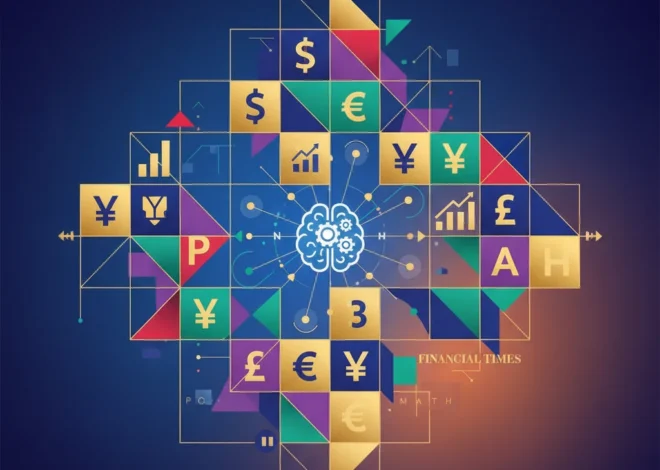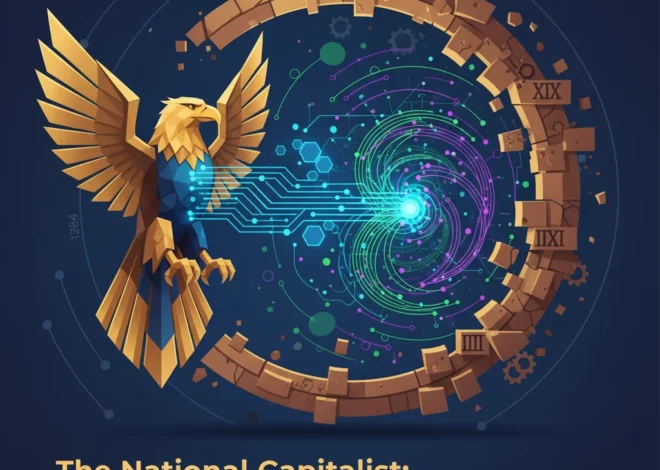
Decoding the Market: What the FT Crossword Teaches Us About Modern Finance
Decoding the Market: What the FT Crossword Teaches Us About Modern Finance
For many professionals in the world of finance, the day begins not with the opening bell, but with a different kind of challenge: the daily crossword. The Financial Times crossword, like the one recently published as Number 18,186, is more than just a pastime. It’s a mental gymnasium, a warm-up for a day spent navigating complex, interconnected systems. The grid of black and white squares, with its intersecting clues, serves as a powerful metaphor for the global economy itself. Each answer, a concept; each intersection, a relationship between sectors, policies, and market forces.
Just as a single “down” clue can unlock multiple “across” answers, a shift in monetary policy can ripple through the stock market, banking, and technology sectors. To succeed, both the puzzle-solver and the investor must possess more than just knowledge; they need pattern recognition, strategic thinking, and an appreciation for how disparate elements connect to form a coherent whole. In this analysis, we’ll use the structure of a crossword to decode some of the most critical concepts shaping today’s financial landscape, from the intricacies of blockchain to the psychology of market cycles.
The Interconnected Grid: Unpacking Key Financial Clues
A crossword isn’t solved in a vacuum. Each answer must fit perfectly with its neighbors. Similarly, understanding modern finance requires seeing the connections between seemingly separate domains. Let’s explore a few “clues” that are central to the puzzle of today’s economy.
Clue: A decentralized, distributed ledger technology (10)
Answer: BLOCKCHAIN
Once synonymous almost exclusively with cryptocurrencies, blockchain has matured into a foundational pillar of financial technology (fintech). At its core, it is a secure and transparent way of recording transactions without a central authority. This simple concept has profound implications for everything from cross-border payments to supply chain management and trade finance.
In traditional banking, verifying and settling a complex international transaction can take days, involving multiple intermediaries and reconciliation processes. Blockchain technology promises to reduce this to minutes, cutting costs and minimizing the risk of fraud. Major financial institutions are no longer just experimenting; they are actively implementing blockchain solutions. According to a 2021 global survey by Deloitte, nearly 76% of executives surveyed believe that digital assets will be a strong alternative to, or outright replacement for, fiat currencies in the next 5-10 years. This highlights a significant shift in thinking within the highest echelons of finance, driven by the efficiency and security that technologies like blockchain offer.
The implications for investing are equally vast. The tokenization of assets—representing ownership of real-world assets like real estate or fine art on a blockchain—could democratize access to previously illiquid investment classes. However, the technology is not without its challenges, including scalability, regulatory uncertainty, and energy consumption, all of which are critical “clues” to solve before widespread adoption becomes a reality.
Clue: A prolonged period of falling stock prices (4, 6)
Answer: BEAR MARKET
Every investor knows the feeling of dread associated with a bear market—a market condition typically defined as a 20% or more decline in major stock market indices from a recent high. Far from being a simple downturn, a bear market is a complex interplay of economic data, investor psychology, and geopolitical events. It’s the “down” clue that can drastically alter the entire “across” landscape of an investment portfolio.
Understanding the difference between a temporary correction and a full-fledged bear market is crucial for strategic long-term investing. While bull markets are characterized by optimism and economic expansion, bear markets are fueled by pessimism and economic contraction. Navigating this environment requires discipline, a focus on fundamentals, and a stomach for volatility. As the International Monetary Fund (IMF) often notes, global financial stability can be threatened by sharp asset price adjustments, making the understanding of these cycles paramount for both policymakers and individual investors.
Below is a table comparing the fundamental characteristics of these opposing market forces:
| Characteristic | Bull Market | Bear Market |
|---|---|---|
| Investor Sentiment | Optimistic, confident, high-risk appetite | Pessimistic, fearful, flight to safety (e.g., bonds, cash) |
| Economic Trend | Strong GDP growth, low unemployment | Slowing or declining GDP, rising unemployment |
| Stock Market Performance | Sustained upward trend in major indices | Sustained downward trend (typically >20% decline) |
| Duration | Often lasts for several years | Can range from months to over a year |
| Trading Volume | High volume on rising prices | High volume on declining prices, can thin out later |
Clue: A central bank’s primary lever to curb inflation (8, 4)
Answer: INTEREST RATES
Few clues have a more widespread impact across the entire economic grid than interest rates. Set by central banks like the U.S. Federal Reserve or the European Central Bank, the benchmark interest rate is the foundation upon which the cost of money is built. When central banks raise rates, they are attempting to cool an overheating economy and tame inflation. This makes borrowing more expensive for businesses and consumers, slowing down spending and investment.
Conversely, lowering rates is intended to stimulate a sluggish economy by making capital cheaper, encouraging expansion and hiring. The ripple effects are immense. Higher rates can strengthen a nation’s currency but put pressure on the stock market, as future corporate earnings are discounted at a higher rate and safer investments like bonds become more attractive. The real estate market, highly sensitive to mortgage rates, often feels the impact immediately. The Federal Reserve’s own publications on its monetary policy framework emphasize this dual mandate of maintaining price stability and maximum employment, a delicate balancing act that defines modern economics (source).
Clue: Automated portfolio management platform (4-7)
Answer: ROBO-ADVISOR
The rise of the robo-advisor is a testament to the transformative power of financial technology. These platforms use algorithms to build and manage investment portfolios based on a client’s risk tolerance and financial goals, all at a fraction of the cost of a traditional human advisor. This innovation has been a game-changer for the investing world, democratizing access to sophisticated portfolio management that was once reserved for the wealthy.
By leveraging technology to automate tasks like asset allocation and rebalancing, fintech companies have dramatically lowered the barrier to entry for new investors. This has not only brought millions of people into the stock market but has also forced the entire wealth management industry to innovate. Traditional banking and investment firms are now integrating their own digital solutions to compete, leading to a hybrid model that combines the efficiency of technology with the personalized touch of human advice. The growth is undeniable, with the global robo-advisory market projected to reach trillions of dollars in assets under management in the coming years.
Conclusion: Solving for the Bigger Picture
Like any challenging crossword, the global financial market can seem daunting at first glance. It’s a complex grid of interconnected concepts, each influencing the others in ways both subtle and profound. Yet, as with a puzzle, clarity emerges one answer at a time. By understanding the definitions and implications of core concepts like blockchain, market cycles, monetary policy, and fintech, we move closer to seeing the complete picture.
The ultimate goal for any investor, business leader, or finance professional is not merely to solve for individual clues in isolation. It is to understand the logic of the entire grid—to appreciate how a new technology in one corner can reshape an established industry in another, and how a central policy decision can redefine the rules of the game for everyone. The puzzle is constantly changing, with new clues and new solutions emerging every day. The key is to remain engaged, keep learning, and never stop trying to solve for X.


